Global gene profiling of spontaneous hepatocellular carcinoma in B6C3F1 mice: similarities in the molecular landscape with human liver cancer
- PMID: 21571946
- PMCID: PMC4955670
- DOI: 10.1177/0192623311407213
Global gene profiling of spontaneous hepatocellular carcinoma in B6C3F1 mice: similarities in the molecular landscape with human liver cancer
Abstract
Hepatocellular carcinoma (HCC) is an important cause of morbidity and mortality worldwide. Although the risk factors of human HCC are well known, the molecular pathogenesis of this disease is complex, and in general, treatment options remain poor. The use of rodent models to study human cancer has been extensively pursued, both through genetically engineered rodents and rodent models used in carcinogenicity and toxicology studies. In particular, the B6C3F1 mouse used in the National Toxicology Program (NTP) two-year bioassay has been used to evaluate the carcinogenic effects of environmental and occupational chemicals, and other compounds. The high incidence of spontaneous HCC in the B6C3F1 mouse has challenged its use as a model for chemically induced HCC in terms of relevance to the human disease. Using global gene expression profiling, we identify the dysregulation of several mediators similarly altered in human HCC, including re-expression of fetal oncogenes, upregulation of protooncogenes, downregulation of tumor suppressor genes, and abnormal expression of cell cycle mediators, growth factors, apoptosis regulators, and angiogenesis and extracellular matrix remodeling factors. Although major differences in etiology and pathogenesis remain between human and mouse HCC, there are important similarities in global gene expression and molecular pathways dysregulated in mouse and human HCC. These data provide further support for the use of this model in hazard identification of compounds with potential human carcinogenicity risk, and may help in better understanding the mechanisms of tumorigenesis resulting from chemical exposure in the NTP two-year carcinogenicity bioassay.
Figures
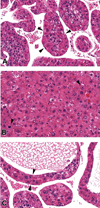
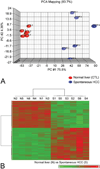

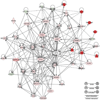


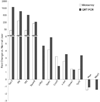
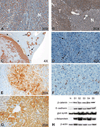
Similar articles
-
NTP technical report on the toxicology and carcinogenesis studies of beta-myrcene (CAS No. 123-35-3) in F344/N rats and B6C3F1 mice (Gavage studies).Natl Toxicol Program Tech Rep Ser. 2010 Dec;(557):1-163. Natl Toxicol Program Tech Rep Ser. 2010. PMID: 21415873
-
NTP technical report on the toxicology and carcinogenesis studies of Elmiron (Cas No. 37319-17-8) in F344/N rats and B6C3F1 mice (Gavage Studies).Natl Toxicol Program Tech Rep Ser. 2004 May;(512):7-289. Natl Toxicol Program Tech Rep Ser. 2004. PMID: 15213766
-
Application of genomic biomarkers to predict increased lung tumor incidence in 2-year rodent cancer bioassays.Toxicol Sci. 2007 May;97(1):55-64. doi: 10.1093/toxsci/kfm023. Epub 2007 Feb 20. Toxicol Sci. 2007. PMID: 17311802
-
Target genes discovery through copy number alteration analysis in human hepatocellular carcinoma.World J Gastroenterol. 2013 Dec 21;19(47):8873-9. doi: 10.3748/wjg.v19.i47.8873. World J Gastroenterol. 2013. PMID: 24379610 Free PMC article. Review.
-
Liver lesions in B6C3F1 mice: the National Toxicology Program, experience and position.Arch Toxicol Suppl. 1987;10:10-26. doi: 10.1007/978-3-642-71617-1_2. Arch Toxicol Suppl. 1987. PMID: 3555413 Review.
Cited by
-
Biological networks for predicting chemical hepatocarcinogenicity using gene expression data from treated mice and relevance across human and rat species.PLoS One. 2013 May 30;8(5):e63308. doi: 10.1371/journal.pone.0063308. Print 2013. PLoS One. 2013. PMID: 23737943 Free PMC article.
-
A multiple testing procedure for multi-dimensional pairwise comparisons with application to gene expression studies.BMC Bioinformatics. 2016 Feb 25;17:104. doi: 10.1186/s12859-016-0937-5. BMC Bioinformatics. 2016. PMID: 26917217 Free PMC article.
-
Hepatic Tumor Formation in Adult Mice Developmentally Exposed to Organotin.Environ Health Perspect. 2020 Jan;128(1):17010. doi: 10.1289/EHP5414. Epub 2020 Jan 15. Environ Health Perspect. 2020. PMID: 31939706 Free PMC article.
-
Mechanistic roles of microRNAs in hepatocarcinogenesis: A study of thioacetamide with multiple doses and time-points of rats.Sci Rep. 2017 Jun 8;7(1):3054. doi: 10.1038/s41598-017-02798-7. Sci Rep. 2017. PMID: 28596526 Free PMC article.
-
Hepatocellular carcinomas in B6C3F1 mice treated with Ginkgo biloba extract for two years differ from spontaneous liver tumors in cancer gene mutations and genomic pathways.Toxicol Pathol. 2013 Aug;41(6):826-41. doi: 10.1177/0192623312467520. Epub 2012 Dec 21. Toxicol Pathol. 2013. PMID: 23262642 Free PMC article.
References
-
- Aderca I, Moser CD, Veerasamy M, Bani-Hani AH, Bonilla-Guerrero R, Ahmed K, Shire A, Cazanave SC, Montoya DP, Mettler TA, Burgart LJ, Nagorney DM, Thibodeau SN, Cunningham JM, Lai JP, Roberts LR. The JNK inhibitor SP600129enhances apoptosis of HCC cells induced by the tumor suppressor WWOX. J Hepatol. 2008;49:373–383. - PMC - PubMed
-
- Anna CH, Iida M, Sills RC, Devereux TR. Expression of potential beta-catenin targets, cyclin D1, c-Jun, c-Myc, E-cadherin, and EGFR in chemically induced hepatocellular neoplasms from B6C3F1 mice. Toxicol Appl Pharmacol. 2003;190:135–145. - PubMed
Publication types
MeSH terms
Substances
Grants and funding
LinkOut - more resources
Full Text Sources
Medical
Molecular Biology Databases

